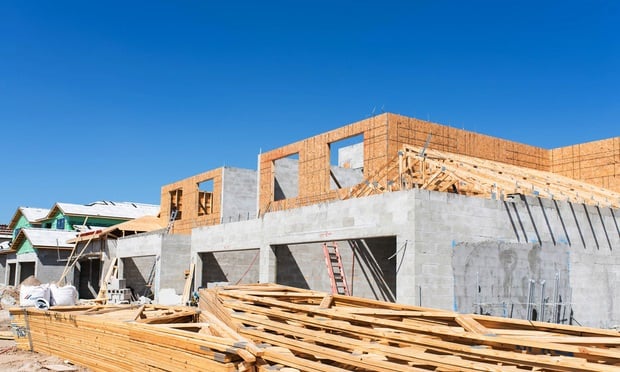As an increasing number of communities in New Jersey seek walk-able, neighborhood-based development as an alternative to sprawl, it is vital to involve the public in every facet of the planning process. To create the right redevelopment for a community, planners, developers, architects, engineers and elected officials must solicit the public to help influence the process. Whether it's turning fading strip malls into vibrant mixed-use neighborhoods or reconnecting isolated neighborhoods to the surrounding fabric, residents should have a hand in ensuring a proposed development fits their community.We know this is a far cry from “business as usual” in many New Jersey communities, where developers have historically created housing tracts and strip malls by fighting for their rights under the state's land use laws rather than obtaining the necessary buy-in from the community. It has resulted in an adversarial relationship between developers and host communities, where often the judicial system must ultimately decide if a ubiquitous big-box store or run-of-the-mill condo development can be constructed under the law. Often, an approval is met with community backlash aimed at whoever is sitting in the mayor's office.
New Jersey municipalities should recognize that a strong working partnership with developers can enhance the final product, improving the local quality of life and the reputation of the community. We embrace a community planning process known as a “charrette.” You may have heard of it, as some towns and developers have used the term loosely to describe a public meeting or some basic form of community outreach.In reality, a charrette is much more. And it is finally coming to New Jersey.
Following the guidelines of the National Charrette Institute (NCI), we are preparing to spend $2 million engaging residents in a Central Jersey community next year as part of the state's first real charrette. It will be an intensive, seven-day process next spring, combining creative work sessions with public workshops and open houses. It will be a collaborative planning process that harnesses architects, planners, traffic experts, engineers, visual and lighting specialists, community outreach professionals and fiscal impact experts to develop a feasible plan that represents what the people of the community want and need.
Such a charrette takes months of preparation. Nearly a year before the scheduled charrette, the team had already mapped the location of wetlands, toured the area, analyzed local traffic patterns, researched the town's history and created a “SWOT” analysis, identifying the strengths, weaknesses, opportunities and threats of such a sweeping redevelopment project.
A charrette, done right, should: be at least four consecutive days; be an open process that includes all interested parties; be collaborative, involving all disciplines in a series of short feedback loops; produce a feasible plan; and take a generalist, holistic approach that welcomes all opinions.
Through the process everyone, from residents to local business owners, becomes aware of the complexities of development and design issues, and everyone works together to arrive at the best possible solution. The core of the charrette is the design team, a multi-disciplinary group of professionals who create a feasible plan that considers all relevant input. During this seven-day process, the team works together to develop a comprehensive, realistic plan. They are stationed within the community and are made readily accessible throughout the process.
The charrette begins with a public workshop to create a clear understanding about the purpose and process and to show participants development in other communities. During the next two days, the design team creates a series of alternative plans based on all information gathered to date, including the public vision, and then solicits input at another public meeting.
This input is used to narrow the alternatives and create more detailed plans that are again reviewed and critiqued by the public during an open house. The design team then further refines the feedback into a final plan and a set of implementation documents to be presented for public confirmation on the final day of the charrette. Through all this, the community is encouraged to visit the charrette studio during open hours to meet with the team and provide input beyond the public meetings.
It is important to note the project is not complete at the charrette's conclusion. Document refinement and further feedback occur through stakeholder discussions and a follow-up meeting approximately one month later. This allows everyone to check in on the refined plan and once again offer feedback.
Not all charrettes need to be as intensive. But communities, or their designated developers, should expect to spend at least $500,000 to assemble the right team. We can all agree the future of New Jersey hinges on smart redevelopment, and that must begin with the right public process – ensuring all stakeholders are working to achieve the same vision.
The views expressed here are those of the author and not of Real Estate Media or its publications.
Mr. Goldin, chairman & CEO of InterCap Holdings of Princeton, has been in the business of redeveloping land in New Jersey for nearly 25 years. More information is available at www.InterCapHoldings.com.
Want to continue reading?
Become a Free ALM Digital Reader.
Once you are an ALM Digital Member, you’ll receive:
- Breaking commercial real estate news and analysis, on-site and via our newsletters and custom alerts
- Educational webcasts, white papers, and ebooks from industry thought leaders
- Critical coverage of the property casualty insurance and financial advisory markets on our other ALM sites, PropertyCasualty360 and ThinkAdvisor
Already have an account? Sign In Now
*May exclude premium content© 2024 ALM Global, LLC, All Rights Reserved. Request academic re-use from www.copyright.com. All other uses, submit a request to [email protected]. For more information visit Asset & Logo Licensing.








